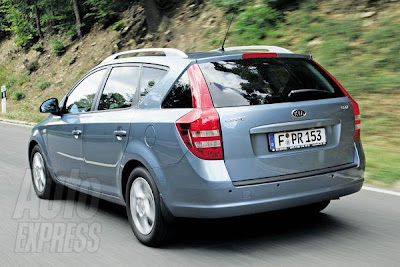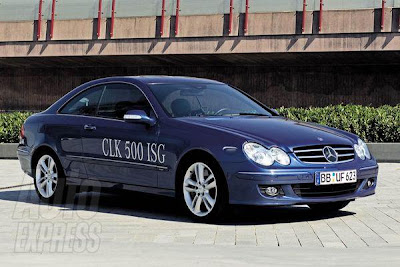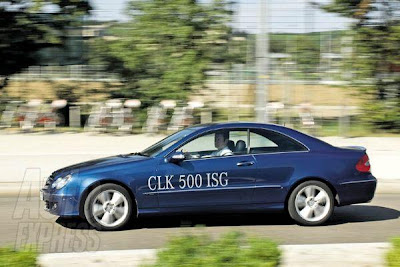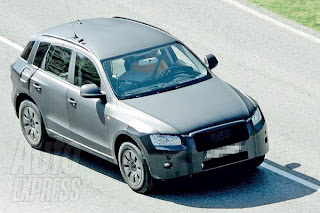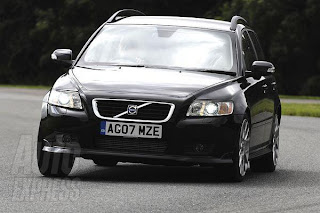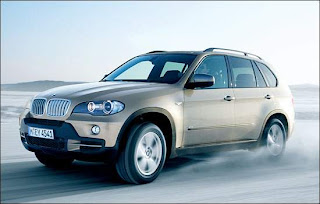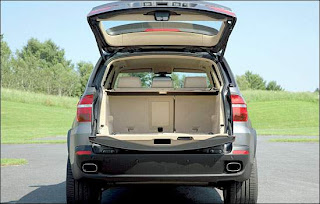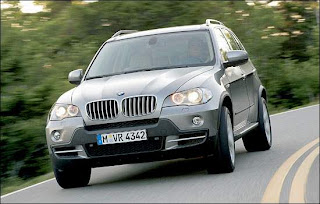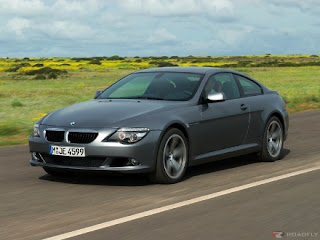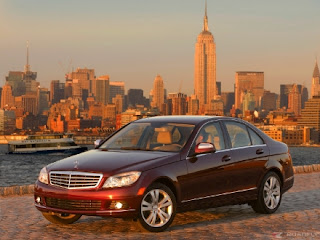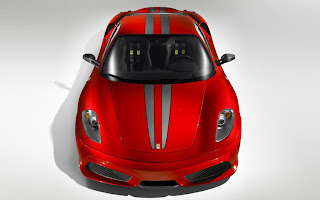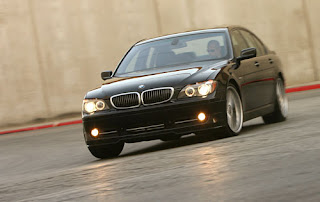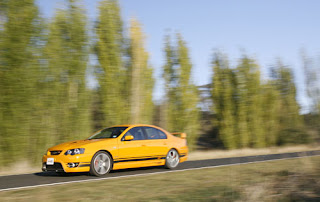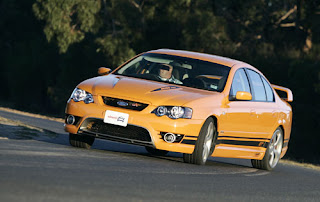Toronto, Ontario - I didn't realize, until I spent a long weekend with the Audi R8, just how many camera phones there were in the city of Toronto.
Having been cell-phone shopping only a few weeks before my R8 experience, I knew intuitively that camera phones were quite popular; that, indeed, almost every cell phone these days comes with a camera of some sort. But my oh my, they're everywhere. There in your side-view mirror, hanging out of cars sitting in your blind spot on the Gardiner Expressway, trying to get some footage of you accelerating away. They’re staring right at you through the back window of cars in front of you in traffic, panning back and forth to take in the full magnificence of the R8's LED driving-light arrangement and its big, low shield-shaped grille. They’re poking out from crowds at bus shelters, snapping a pic as you drive by. They’re there, right in your face as you come back to the car in a parking lot, hoping to sneak away and avoid any lengthy conversation.
I've driven more expensive cars than the Audi R8. I have driven faster cars and cars that make more noise and cars that go around corners faster. But I have never driven anything which draws quite so much attention.
The Toronto International Film Festival opened the same day I picked up the R8. On my drive home from work through the entertainment district, onlookers peered in the gunslit-shaped side windows, hoping to catch a glimpse of celebrity and instead got an eyeful of fat Asian auto journalist - not old enough or thin enough to be Chow Yun-Fat and not in good enough shape to be Jackie Chan. One guy, I kid you not, even asked for my autograph, even though he didn't know who I was. The car was enough, he said; he'd glimpsed it parallel-parked on Richmond and had circled the block to take a closer look. Is this what celebrity feels like?

Such adulation from the masses comes at a price, of course, but perhaps not as high a price as you might expect. Oh sure, $139,000 to start (my tester listed at just over $150,000) is a big chunk of change in anybody's book, but curbside speculators always guessed high on the price scale. Perhaps it's the R8's proportions, which are long, low, wide and eerily reminiscent of the Lamborghini Gallardo with which it shares a little bit of DNA. Perhaps it was the detailing: delicate double-spoke alloys which barely wrapped around huge brake calipers bearing R8 logos, rear lights that looked like neon-outlined TV screens, that contrasting panel of silver on the side of my grey test car. Perhaps it's the specs: 420 horses from its dry-sump, direct-injection V8, six speeds, four-wheel drive, and only two seats. Perhaps it's the technology: magnetic ride-control suspension, GPS navigation, optional F1-style paddle shifters.
The darn thing LOOKS high-tech too, a combination of its tall windshield, jewelled lights, the vents cut into those side panels, and the mesh-inset rear wing which automatically rises at 110 km/h. "One-forty?" people gawped. "It looks like should be two-fifty!"

One-forty it is, though, making Audi's most direct target the Porsche 911 Carrera 4S, which stickers at about $10,000 less than the R8 but is about equivalent when equipment is evenly matched. Curious about the reaction the R8 would get, I took it to an informal gathering of Porsche and Corvette enthusiasts that meets every Saturday in the parking lot of a suburban coffee shop. It was, not surprisingly, the star of the show, swarmed by interested would-be owners who loved its design, its interior and the sound its V8 made. The only disappointment, really, seemed to come from the fact that all of the next year's allocation of 100 cars is already sold out, making R8 ownership an unlikely proposition even for people who can afford it. It's all part of Audi's plan to keep the car exclusive enough to stay special.
In terms of the way the R8 compares behind the wheel, the Porsche has its advantages and it has its disadvantages. The main difference is that the 911 feels smaller once you're on the move. Its narrower body, more upright seating position and larger glass area make it easier to thread through traffic and along winding roads with precision; the Audi, despite being incredibly nimble and light on its feet, always feels like a big car: its width makes squeezing into tight parking spots a chore even when using the reversing camera and you always second-guess yourself about whether you can thread the car through any given piece of pavement.

While their power-to-weight ratios and acceleration times are close enough to be almost equal, the Audi can feel faster and more powerful in everyday situations thanks to the fat spread of torque from its V8. While the R8 redlines at over 8,000 rpm, it delivers plenty of low-end punch even at 2,000; the Porsche needs to be revved harder and often requires a downshift when the
Audi doesn't. Braking performance is about equal; the C4S has six-pot calipers up front while the Audi has eight, but both drag the cars to a drama-free stop in a minimum distance. Likewise, both all-wheel-drive systems are strongly rear-biased, shuttling power up front when needed without inducing understeer in corners.
One area where the 911 has an advantage is steering feel. While both cars corner flat and true - and both, interestingly enough, also bob their noses a little bit in fast curves - the Audi's steering can feel heavy and a little bit numb while the 911's three-spoke wheel dances under your fingertips. Ultimately, this leads to a greater sense of confidence, even if the Porsche's rear-engine layout means it'd be trickier to drive at the limit than the smoother-transitioning mid-engined Audi. On the other hand, the R8 is vastly more comfortable as a daily driver: even in the supposedly-stiff sport mode, it rides better than the 911 and in comfort mode is as composed as any sedan. Its cabin feels much wider and save for a dead pedal which was too close for my taste, the layout is near-perfect, with easy-to-decipher controls and displays right where you would expect them.

Even though a lot of the parts in the R8's interior actually come from other Audis - the steering wheel, door handles, climate control knobs and other bits come from the TT, for instance - it's hard to deny the sense of occasion you feel dropping into its low, low cabin. The view out the windshield is spectacular. The cockpit sweeps around the driver in one sweeping arc, the gauges float in chromed triangular pods and the navigation screen swivels away at the touch of a button so you can load discs and memory cards. Choose the manual transmission and you get an exposed shift gate like a vintage Ferrari's; even moving around a parking lot, you get a clack-clack sensation to remind you that you're driving something special.
There are other theatrical touches as well. When you unlock the R8 with the keyfob, not only is the interior lit up, but so is the glass-covered engine bay, cool blue xenon exposing the V8 for the world to see. Flick on the headlights and you discover subtle little R8 logos in the headlamp lenses; the driving lights are a row of LEDs that curve under the main beams, sort of an automotive form of mascara. Inside, the gauges flicker on and all the needles do a full sweep before settling into their proper positions; the navigation system even has a cool R8-branded start-up screen. Under way, you're treated to one of the world's greatest engine notes, a magnificent high-tech rumble from the quad pipes; think Pavarotti singing thrash metal. Properly executed downshifts are greeted with a sharp bark from the exhaust and you hear the odd screech of tire before the lenient stability control reins in the fun in tight corners.
It is, ultimately, the sense of theatre, combined with genuine everyday ability, which makes the R8 such an interesting proposition. It's as practical as a 911 - save for the
Porsche's tiny rear seats - but looks so much more exotic. It's as comfortable as a luxury sedan but exudes so much more drama, whether you're sitting still in traffic or roaring along the left lane of the expressway. It's a car with the visual presence of an Italian super car, with a generously-sized trunk, decent behind-the-seats storage and unflappable build quality. It is beautiful to behold and a delight to drive, one of the very best performance cars you can (more or less) buy; and, at least for now, definitely the coolest.
Pricing: 2008
Audi R8
Base price: $139,000
Price as tested $150,100
-->Manufacturer’s web site
http://www.audicanada.com/



